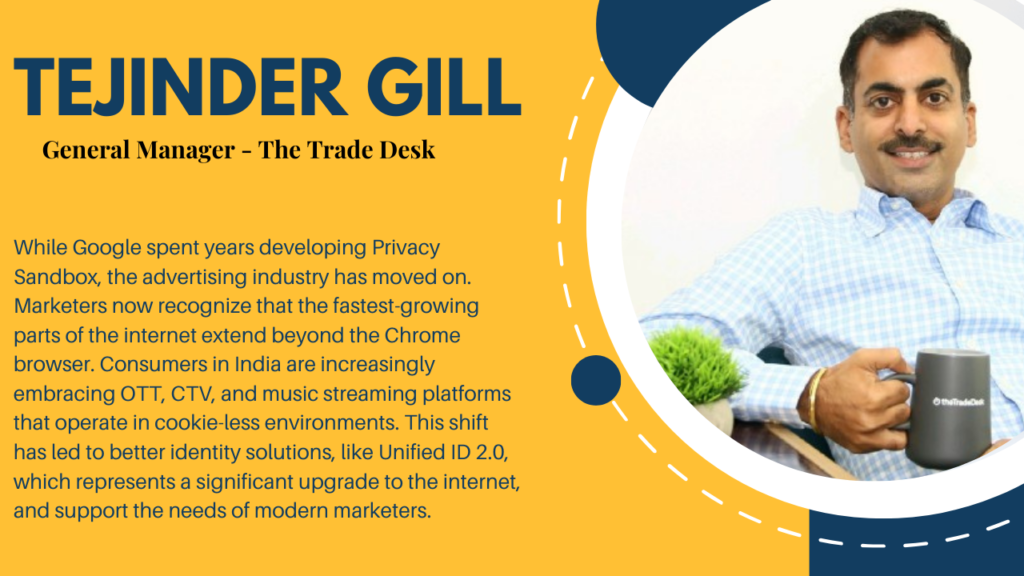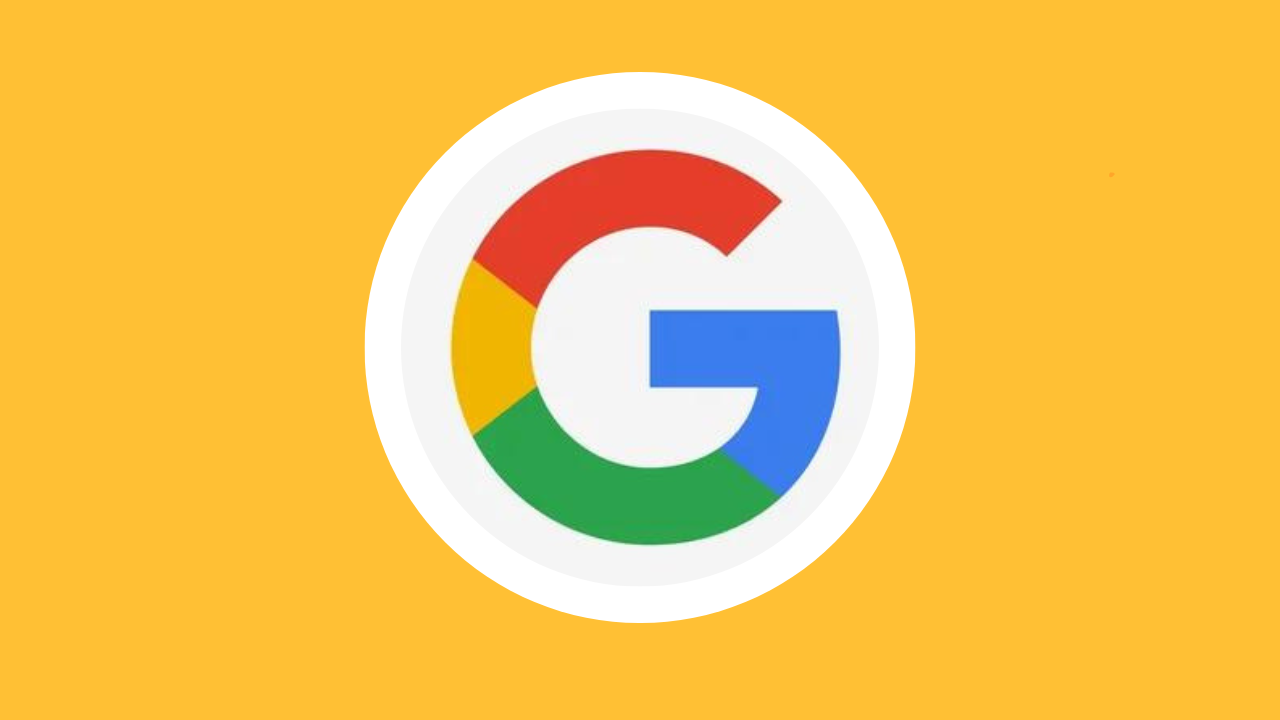In an unexpected turn of events, Google has revealed that third-party cookies will continue to be supported in Chrome browsers indefinitely, overturning its earlier plan to phase them out by 2025. This decision, influenced by regulatory and industry pressures, represents a major change in the digital advertising world. What implications does this have for the media industry, Let’s hear from the Leaders.
Gopa Menon (Ex- Head of Digital- Mindshare SEA)
Google’s decision to pause third-party cookie deprecation, while offering temporary relief to advertisers, signifies a broader shift in the digital landscape. The move mirrors existing options in browsers like Firefox and Safari, empowering users to control their data and privacy preferences. For the digital world, this signals a growing emphasis on user consent and transparency in data collection.
In the debate between first-party and third-party cookies, this decision underscores the increasing importance of first-party data. With heightened privacy concerns and regulatory scrutiny, advertisers are incentivized to strengthen their direct relationships with consumers and collect data through their owned channels. This shift empowers brands to build trust and deliver personalized experiences based on explicit consent, while reducing reliance on third-party tracking.
For advertisers, Google’s announcement provides a temporary reprieve, allowing them to continue leveraging third-party cookies for targeted ads while adapting to the evolving landscape. However, the long-term trajectory remains uncertain, as regulatory pressures and privacy standards continue to evolve.

Key Implications for Advertisers:
- Short-Term Stability: Marketers can continue using existing strategies without immediate disruption.
- Long-Term Uncertainty: Regulatory challenges and evolving privacy norms necessitate ongoing adaptation.
- Focus on First-Party Data: Building direct relationships with consumers and collecting consent-based data is crucial.
- Privacy-First Approach: Transparency and granular data practices are essential for building consumer trust.
The Way Forward:
While the cookie deprecation delay offers a temporary breather, it doesn’t negate the ongoing shift towards a privacy-centric digital landscape. Advertisers must proactively adapt by:
- Testing Alternative Solutions: Explore contextual targeting, creative strategies, and identity resolution techniques.
- Refining Data Strategies: Identify and acquire essential consumer data for personalization, while ensuring transparency and compliance.
- Collaborating with Publishers: Leverage publishers’ first-party data and expertise for effective targeting and measurement.
Aneri Jain (GM- Marketing- Subway India)
While Google’s decision to keep third-party cookies provides temporary stability, it underscores the urgent need for advertisers to innovate and adapt. This is an opportunity to strengthen relationships with customers through first-party data and privacy-conscious practices.
The future of digital advertising lies in creating transparent and trust-based interactions with audiences. For retail and QSR brands, the shift away from relying solely on third-party cookies necessitates rethinking data strategies. A few Key methods to thrive in this pristine environment can be –

- Building Robust First-Party Data Strategies: Utilizing customer loyalty programs, mobile apps, and in-store technology like digital kiosks allows brands to gather data directly from customers, improving understanding of their behaviour and preferences.
- Enhancing Customer Engagement and Experience: First-party data enables personalized promotions and recommendations, improving customer satisfaction and driving sales.
- Investing in Privacy and Transparency: Transparent data collection and usage practices build customer trust. Brands should clearly communicate how they use customer data and provide easy opt-out options.
- Exploring Alternative Advertising Solutions:
- Contextual Advertising: Targeting ads based on web page content respects user privacy while delivering relevant messages.
- Collaborating with Publishers: Partnering with publishers to access high-quality first-party data helps in effective targeting and measurement.
- Leveraging Zero-Party Data: Engaging customers through surveys, quizzes, and interactive content allows brands to collect data that customers intentionally share, reflecting their explicit preferences and intentions.
By prioritizing first-party data and embracing innovative advertising strategies, brands can continue to thrive and build lasting relationships with their audiences.
Vinay Tamboli (CEO – Data & Insights, LS Digital)
Necessity for adaptability in the rapidly changing digital advertising environment, as illustrated by the evolving timeline and ramifications of Google’s decisions regarding third-party cookies.
Tracking the Timeline of Google’s Third-Party Cookie Decisions
Since Google’s Privacy Sandbox initiative announcement in 2019, the digital advertising industry has been on high alert regarding the potential phase-out of third-party cookies. Initially expected by 2022, these changes were later postponed to 2023, and most recently, to 2024. This shifting timeline has required advertisers to stay nimble, and experimenting with new tracking technologies like FLoC, CHIPS, Fenced Frames, Shared Storage, FedCM, and now, re-evaluating strategies based on Google’s latest decision to maintain third-party cookies.

Implications for Digital Advertising
Google’s decision to keep third-party cookies offers a temporary reprieve for the digital advertising industry. Advertisers can continue to utilize detailed user data for personalized ad targeting, which is crucial for effective marketing and maximizing ROI. However, this decision also underscores the ongoing emphasis on user privacy, indicating that even as third-party cookies remain, there will be stronger user controls and transparency measures. The industry is likely to see a blend of third-party cookies with newer, privacy-focused solutions, spurring innovation in tracking technologies and data management practices.
Strategic Adjustments in Advertising
In light of Google’s decision, advertisers are expected to adjust their strategies to adopt a user-centric approach. This involves prioritizing first-party data collection and consent management to honour user preferences while ensuring effective ad targeting. Additionally, educating clients about the significance of transparency and building trust in user interactions is crucial, with consent and user choice becoming central elements of digital marketing strategies.
Looking Ahead
Given Google’s history of revisiting their stance on third-party cookies, it is plausible that the idea of removing them could resurface in the future. The digital advertising landscape is constantly evolving, influenced by regulatory pressures, technological advancements, and changing user expectations. Advertisers must remain agile and proactive, continuously monitoring industry trends and developments to stay prepared for any future changes.
Tejinder Gill (General Manager- The Trade Desk)
Google has finally acknowledged what the advertising industry has been asserting for years: the Privacy Sandbox is not a good product. It fails to sufficiently protect consumers’ privacy, empower advertisers, and likely hurts publisher monetization the most.
While Google spent years developing Privacy Sandbox, the advertising industry has moved on. Marketers now recognize that the fastest-growing parts of the internet extend beyond the Chrome browser. Consumers in India are increasingly embracing OTT, CTV, and music streaming platforms that operate in cookie-less environments. This shift has led to better identity solutions, like Unified ID 2.0, which represents a significant upgrade to the internet, and support the needs of modern marketers.

Now, while Google seems to have finally acknowledged that the best option is to give consumers a choice, the question remains—will Google truly offer consumers choice? Or will they make decisions on their behalf and then bury consumers’ access to change it? And – will they change their minds again? Regardless, we should all continue to make the internet better and put both advertisers and publishers in control of their own destiny.
